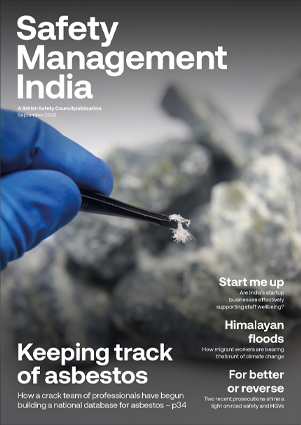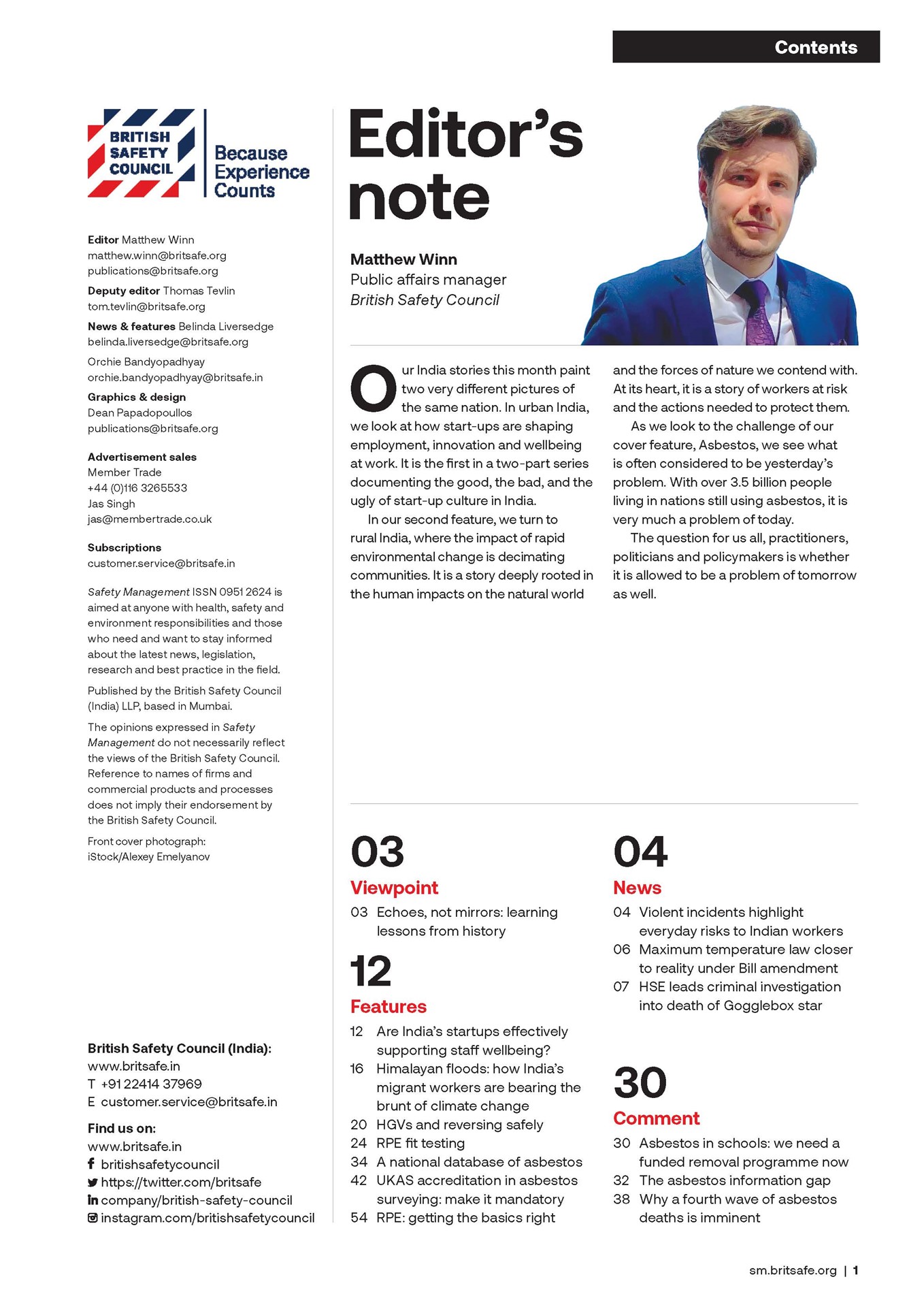Those responsible for business premises should provide assistive equipment to ensure the safe and efficient evacuation of people with mobility impairments. However, it is crucial that this equipment is regularly maintained and that staff are thoroughly trained in its use – otherwise, confusion and potentially fatal delays can arise in an emergency.
Features
Inclusive, compliant evacuation planning: why training and maintenance matter
In the event of an emergency, the safe evacuation of all building occupants is a non-negotiable responsibility.
For people with mobility impairments, whether permanent, temporary or invisible, evacuation readiness can mean the difference between safety and disaster. There are 5.5 million people with a disability in employment in the UK and this figure is growing, reinforcing the urgent need for inclusive evacuation strategies. And yet, despite legislation and increased scrutiny, many organisations continue to fall short in their planning, training and maintenance obligations.
Inclusive evacuation is not a future ambition; it is a current and critical requirement. In all premises, ensuring that everyone can escape safely is not only a legal duty but a moral one.
 One in 10 businesses had no plan at all for evacuating people with permanent disabilities according to an Evac+Chair survey. Photograph: Evac+Chair
One in 10 businesses had no plan at all for evacuating people with permanent disabilities according to an Evac+Chair survey. Photograph: Evac+Chair
Navigating a complex legal framework
UK fire safety law sets out clear responsibilities. The Regulatory Reform (Fire Safety) Order 2005, as amended by the Fire Safety Act 2021, defines the role of the ‘responsible person’, typically an employer, building owner or facilities manager.
This individual is legally obligated to ensure that appropriate fire safety measures, including evacuation procedures and provisions, are in place for the safety of all individuals on the premises.
As part of their legal duties, the responsible person must ensure that evacuation equipment is properly maintained and that designated individuals are trained and competent in its use. This is essential to safeguard everyone on the premises in the event of a fire or other emergency. Articles 17, 18 and 21 of the Order respectively address equipment upkeep, competent person appointment and staff training.
Other frameworks further support and reinforce this. The Health and Safety at Work Act 1974 outlines a broad duty of care employers have towards their employees and visitors, while the Provision and Use of Work Equipment Regulations (PUWER) 1998 requires that workplace equipment be maintained in a safe condition and inspected regularly by competent individuals.
The Equality Act 2010 also plays a role, ensuring that reasonable adjustments are made for disabled people. This includes ensuring safe and equal access, covering entry and exit, including in emergencies. If a route is inaccessible for a disabled person, this could be classed as disability discrimination under the Act.
Despite these various pieces of legislation, recent enforcement data suggests a distinct
lack of compliance. In the 2023/24 financial year, fire and rescue services in the UK issued 2,823 enforcement notices following fire safety audits, a 24 per cent increase on the previous year. Alarmingly, prosecutions under Article 32, which penalises the failure to maintain essential life-saving equipment, rose by 79 per cent.
The lack of readiness
Having evacuation equipment in place for mobility-impaired people is a great first step to preparedness and readiness. However, without trained employees, regular practice and robust maintenance protocols, the equipment may not be effectively deployed in a time-critical emergency, such as a fire alert.
Research by Evac+Chair, the UK’s leading manufacturer of evacuation chairs, with more than four decades of experience, reveals the extent of this readiness gap. In 2023, the company commissioned the Risky Business report, surveying key decision-makers across a range of sectors. The findings were concerning. Nearly one in four respondents admitted to having only a partial understanding of their legal responsibilities around evacuation.
Almost one in five respondents said their emergency plans did not account for individuals with temporary mobility impairments, such as those recovering from injury or in late-stage pregnancy.
Most worryingly, one in 10 businesses had no plan at all for evacuating people with permanent disabilities. Company culture is just as important as having the right information, yet recklessness when it comes to safety exists.
Evac+Chair’s results illustrate that the problem is rooted in irresponsible workplace culture, with the survey finding that just over two-thirds of decision makers think there is a culture of fire safety non-compliance or looking for loopholes in the business community.
These statistics suggest a widespread failure to plan effectively for inclusion. The risks are not hypothetical. In a high-pressure emergency, untrained staff and unmaintained equipment can contribute to confusion, delay and potentially fatal outcomes. To protect life, evacuation procedures must be well-documented, regularly tested and supported by staff training and servicing regimes that ensure evacuation equipment and personnel, with a role in evacuating people, are always ready to respond.
 Without training, evacuation efforts may be delayed – leading to confusion, hesitation and potentially dangerous bottlenecks on staircases. Photograph: Evac+Chair
Without training, evacuation efforts may be delayed – leading to confusion, hesitation and potentially dangerous bottlenecks on staircases. Photograph: Evac+Chair
Building confidence through training
Training is critical for turning evacuation plans into effective, life-saving action. Staff must be able to confidently and safely operate evacuation chairs, as real-life scenarios often present challenges, such as crowded stairwells or time pressure.
Without adequate training, evacuation efforts may be delayed – leading to confusion, hesitation and potentially dangerous bottlenecks on staircases. In an emergency, speed is vital; every second counts when it comes to evacuating a building and protecting lives.
Effective, hands-on training not only reduces the risk of injury to both the operator and the passenger, but also ensures that staff are competent, prepared and ready to respond swiftly and efficiently when it matters most.
The most effective training combines essential theory with hands-on experience. Training offers operators the confidence and competence to use an evacuation chair. Refresher training is equally important. Over time, skills fade and confidence diminishes. Regular training helps ensure that, in the event of a real emergency, staff are ready to act swiftly and correctly.
Official guidance supports this approach. The UK Government’s Fire Safety Risk Assessment: Supplementary Guide recommends organisations carry out evacuation drills at least twice per year, with additional training for anyone responsible for operating evacuation equipment.
Maintenance: a non-negotiable priority
Just as critical as training is the ongoing maintenance of evacuation chairs and related devices. Under PUWER 1998, organisations have a legal duty to maintain and inspect all workplace equipment regularly. Visual checks of evacuation equipment by in-house teams on a quarterly basis can also help identify issues such as worn belts, damaged wheels or loose buckles before they compromise safety.
The consequences of poor maintenance are not merely theoretical. A malfunctioning evacuation chair during a real evacuation could lead to injury, delay or loss of life. Proactive servicing not only ensures equipment reliability but also extends product life and demonstrates due diligence. In an era of increasing risk, from extreme weather to terrorism, being prepared is no longer optional.
The human cost of inaction
While the legal framework sets out clear obligations, there is also a powerful ethical case to act. Failing to provide adequate evacuation procedures for those with reduced mobility amounts to a denial of fundamental rights. Accessibility is about more than just entering a building; it’s about being able to leave safely when it matters most.
Inclusive evacuation must become the standard, not the exception. Buildings should not be considered truly accessible unless they include safe, viable routes of egress for everyone. That includes people using mobility aids, wheelchair users and those with hidden or temporary impairments.
The fire safety community has a vital role to play in raising awareness and closing the compliance gap. Fire risk assessors, consultants and enforcers must continue to champion inclusive evacuation planning, not only at the point of inspection but throughout the design, construction and operational phases of buildings. Policymakers too should consider introducing clearer, more enforceable mandates for evacuation planning, especially in complex buildings or those with public access.
Conclusion: no time for complacency
Evacuation is not just about ticking boxes. It is about responsibility, readiness and respect for human life. As Nathaniel Thomas-Hall, head of export and innovation at Evac+Chair, puts it: “Failure to prepare is preparing to fail. We have the tools, technology and training to make inclusive fire safety a reality - what’s missing in many cases is the will to act before it’s too late.”
The time is now for that will to take shape. In today’s regulatory climate, organisations can no longer afford to be complacent. Evacuation planning must be inclusive, comprehensive and proactive. Only then can we truly guarantee that when the alarm sounds, every person will have a clear and safe path to escape – no hesitation, no confusion.
For more information see:
evacchair.co.uk
linkedin.com/company/evacchair
@Evac_Chair
[email protected]
T. +44 (0)121 706 6744


FEATURES

Delhi’s air pollution problem leaves construction workers jobless and without pay
By Orchie Bandyopadhyay on 10 November 2025
Every autumn and winter, Delhi experiences terrible air pollution that places the health of its 40 million residents at grave risk. But government measures to alleviate the problem by temporarily closing construction sites mean hundreds of thousands of daily-wage labourers are being left without wages and a means of financial support.

India’s road rage crisis: how professional drivers are bearing the brunt
By Orchie Bandyopadhyay on 10 November 2025
High profile reports of violent attacks on people who drive for work purposes, like bus and delivery drivers, have shone a spotlight on the growing problem of road rage in India. Commentators say it is now time for the Government to step up prosecutions of those who act aggressively on the road, while educating drivers on stress management techniques, to tackle the problem.

